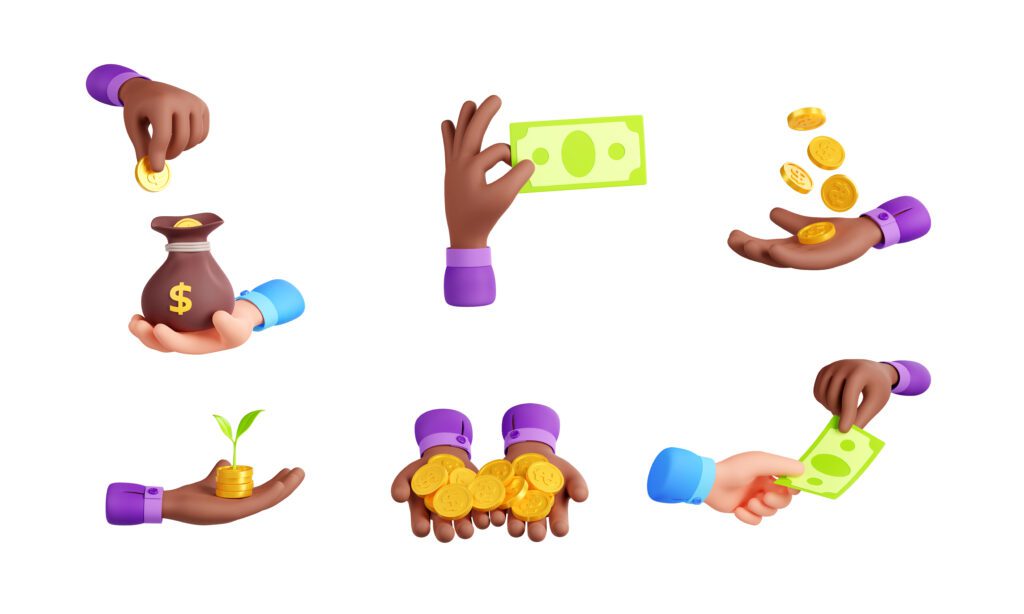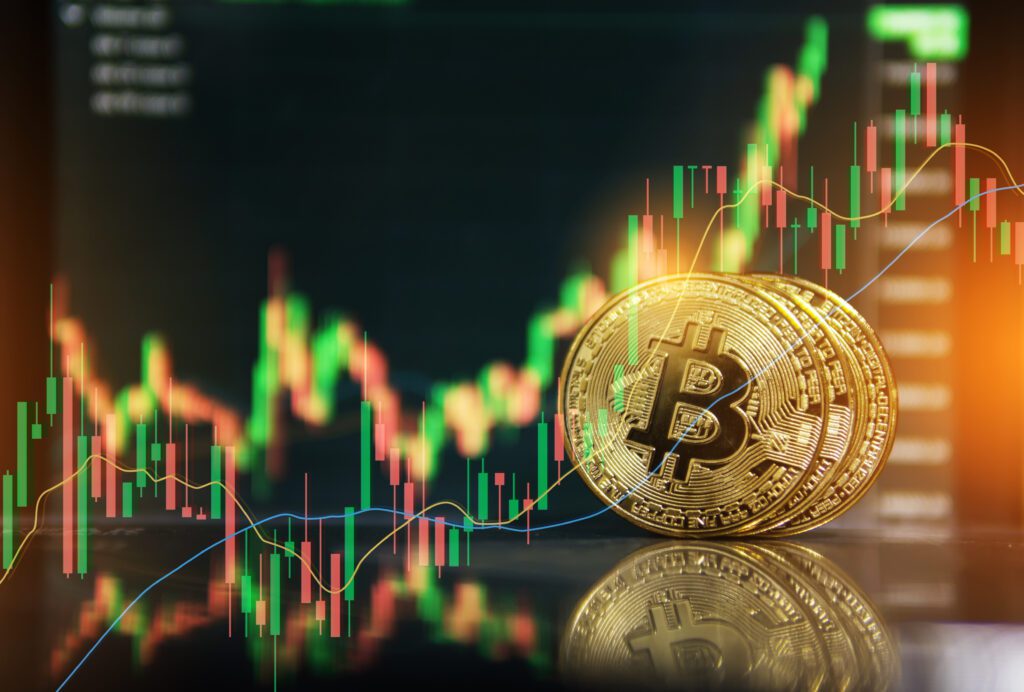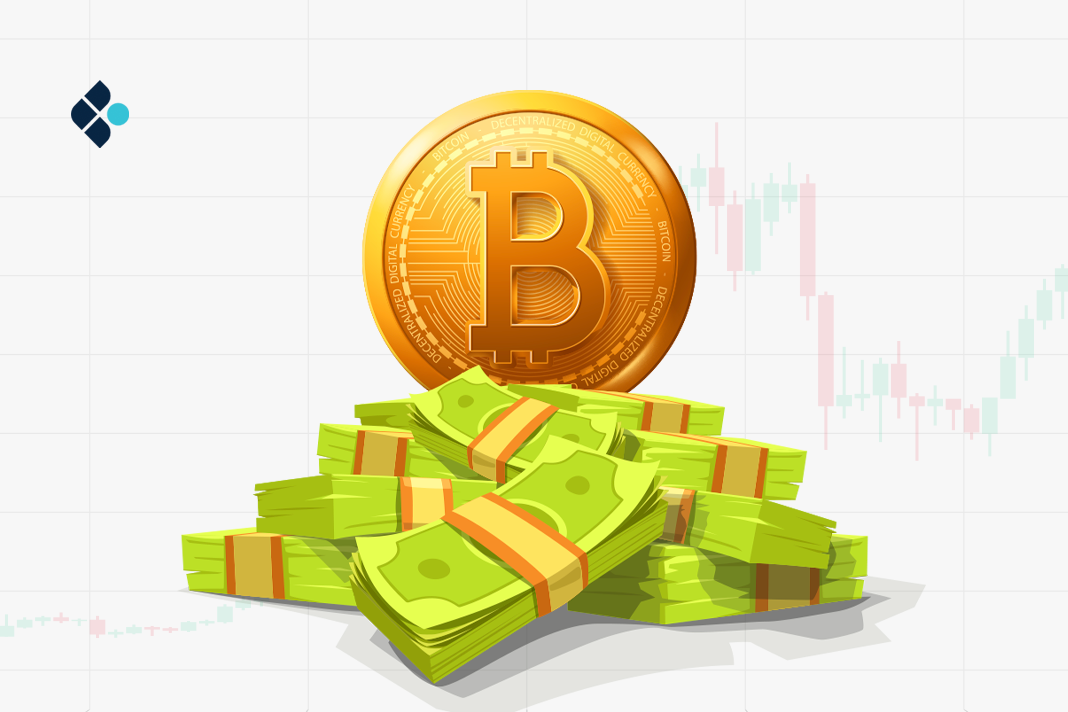Many Bitcoin traders spend lots of time with their eyes peeled on a screen, looking up Bitcoin prices. Everyone is eager for a price bump, and while many of us would love to have some level of certainty, the market’s volatility would not let us.
I’d like to directly reply on how much Bitcoin is, but it’s impossible. Instead, I’ll give you a comprehensive guide to knowing the price of Bitcoin at every given moment and the underlying factors that determine those prices — making you a better Bitcoin trader.
Ready to become more confident in the market despite its unpredictable nature? Take a read!
What Determines Bitcoin’s Price?
Before looking at reliable sources for your Bitcoin prices, let’s peek behind the curtains to see what influences those up and down price movements.
1. Supply and demand
Unlike traditional fiat currencies that can be printed whenever they want, Bitcoin’s supply has been predetermined from its existence, and it would never be more than 21 million BTC.
Therefore, when the demand for BTC grows above its supply, its value skyrockets, but when its supply is surplus, and the demand is weakened, its value plummets. This fluctuation — although influenced by other factors — is the main reason for Bitcoin’s price volatility.
2. Market sentiment
How crypto enthusiasts and investors feel about Bitcoin is also a substantial factor in its price. When the sentiment is positive, investors feel very strongly about Bitcoin’s prospects and growth projections. Therefore, the demand for BTC increases, making it more valuable. Positive sentiment can come from exciting news and media, favourable government regulations, or institutional adoption.
However, when there’s a negative sentiment in the market, the demand for BTC also drops as investors begin to lose confidence in its prospects, which drives the value down. When there’s negative sentiment, you may see more people selling their BTC and flooding the market.
News and media also play a role in this, as well as frequent security attacks or unfavourable government regulations.
3. Utility and adoption

Bitcoin, being the most successful cryptocurrency, is also a result of widespread adoption and real-world use cases.
Many people treat Bitcoin as they would treat gold — a store of value. Rather than use it as a currency for day-to-day spending, they use it to hedge against inflation. This is because of its decentralised nature, limited supply, and inflation resistance.
In the same vein, BTC is also a growing means of exchange where merchants and global service providers now offer BTC as a payment option.
Larger institutions are still wary of Bitcoin due to its unpredictable nature. However, it is gaining recognition as hedge funds, and asset managers are beginning to allocate a portion of their portfolios to BTC.
The degree to which Bitcoin is accepted and used also plays a massive role in its price.
4. External factors (regulation, macroeconomics, etc.)
Bitcoin is designed to exist outside central control, hence its decentralised nature. However, for legitimacy concerns and Bitcoin’s advancement, favourable regulations may impact investors’ confidence and boost the demand for BTC.
Conversely, harsh regulations would have investors withdrawing their investment and support, leading to price crashes.
Macroeconomics looks at the world’s economic condition at the time, considering economic growth, inflation, interest rates, etc. Although these are traditional financial concerns, they also have a massive impact on BTC’s price.
When there is economic uncertainty, people may opt for an asset class like Bitcoin to preserve their money’s value — resulting in a high demand for BTC. However, when the economy is thriving, and more traditional investments seem more appealing and secure, investors may move the bulk of their BTC investments— causing its value to drop.
Different Ways to Check Bitcoin’s Price
Here are the four sources you can use to find out the current price of Bitcoin:
1. Cryptocurrency exchanges
Cryptocurrency exchanges utilise several features to display Bitcoin’s price. They monitor the market movements to provide real-time updates. Price charts and historical data also play an essential role in analysing past price trends and identifying recurrent factors.
2. Financial news websites

Websites dedicated to finance news and crypto price movements provide real-time Bitcoin price updates informed by the market’s current value. In addition, they also offer market analysis and insights from market experts, which help investors make better decisions.
3. Mobile apps
They are a convenient and easy way to check Bitcoin prices on the go. These apps also provide you with real-time updates influenced by the price movements,
With an over-the-counter (OTC) solution like Breet, you even get an in-app Bitcoin price calculator to monitor prices in your local currency (Naira and Cedis).
4. Price tracking tools
Price tracking tools do just that — price tracking. They are designed for the sole purpose of delivering real-time prices so that investors can make quick and timely decisions.
How to Interpret Bitcoin’s Price
1. Understanding decimals and units (BTC, mBTC, satoshis)
It doesn’t matter whether you’re a fresher or an OG in the Bitcoin space; it can be confusing to understand all the zeroes and decimals that BTC’s price is often quoted in.
Unlike fiat currencies, Bitcoin can be divided into eight decimal places, so one BTC can be divided into 100,000,000 units. This allows users to buy or sell fractions of BTC; this makes it easy to perform precise transactions.
BTC is priced in four different units, and they are
- Bitcoin (BTC): This is one whole Bitcoin.
- Satoshi (SAT): This is the smallest unit of Bitcoin and equals 0.00000001.
- Millibitcoin (mBTC): Equals 0.001 BTC, which is 100,000 Satoshis
- Microbitcoin (ⲘBTC): This is 0.000001 BTC and is equivalent to 100 Satoshis.
To avoid mistakes that will cost you a lot, you need to become familiar with these units and how you can convert them.
2. Dollar value vs. Bitcoin’s purchasing power
The default fiat currency in which Bitcoin prices are shown is in dollars. So, it becomes vital for you to understand the dynamic of dollar value and the actual purchasing power of BTC.
Because Dollar and Bitcoin belong to vastly different currency groups, you cannot interpret the Bitcoin’s price in dollars as Bitcoin’s purchasing power. I’ll explain why.
Dollar value is tied to its economic performance and is prone to inflation. Meanwhile, we have established that Bitcoin is used to hedge against inflation. Therefore, whether the dollar is doing great or poorly, what matters is what you can buy with your BTC.
Therefore, it would be wrong of you to evaluate how much your Bitcoin is worth by the current performance of the dollar.
3. Impact of Bitcoin’s price on the overall market

Bitcoin is the leading crypto in the world, holding the torch and paving the way for all other cryptocurrencies (altcoins). As a result, Bitcoin’s price is quite influential and can dictate market trends.
Most investors — even when holding altcoins — look to BTC to indicate how well the market is doing. This will help them gauge factors like market sentiment and volatility. With this, they can go on and make better decisions.
But, I’d also like to mention that Bitcoin being a powerhouse in the crypto market does not negate the uniqueness and growth potential of altcoins that do well, irrespective of Bitcoin’s price movements.
Frequently Asked Questions (FAQs) About Bitcoin Prices
How much do I need to start Bitcoin in Nigeria?
What’s so great about Bitcoin is that you can start investing where you are financially. Unlike traditional investments with a set and often expensive entry point, you can begin your BTC investment journey with as low as 500 naira.
However, you should also pay attention to your chosen crypto platform’s transaction fees.
How to earn Bitcoin?
There are many platforms and ventures that you can use to earn BTC. Some are:
- Long-term investments are well-suited to individuals who don’t like risks but want a huge profit margin on their assets. They usually buy when there’s a dip in the market and wait for it to appreciate. Patience is critical in this method.
- Trading: This is more hands-on and is the active buying and selling of BTC to take advantage of the short-term, rapid price movements.
- Microtasks and Online Rewards: This requires you to do small tasks and get some BTC as a reward.
How is Bitcoin value created?
BTC, like every asset, follows some economic rules to become valuable. Some of them are:
- Scarcity: the amount of BTC that will ever exist is 21 million, which makes it super valuable. As its demand increases, so does its value.
- Utility: Due to Bitcoin being the same value anywhere in the world, it has become a favoured value exchange for goods, services and remittances. In addition to being secure, fast, and decentralised, more people are adopting its use.
- Investment: while some people use BTC as a value exchange, many see it as an asset, much like gold and stocks. It is used as a store of value to hedge against inflation.
How do I convert Bitcoin to cash?
Converting Bitcoin to cash is easy, but it becomes a lot more complicated in countries like Nigeria, with strict regulations. This is where over-the-counter (OTCs) comes in — specifically, the Breet app.
For seamless, fast, and secure transactions offering the juiciest exchange rates, Breet is the app to use as a Nigerian or Ghanaian trader/investor. With automatic deposits in your bank account, you’re in for the most effortless Bitcoin-to-cash conversion ever!
What causes Bitcoin to go up and down?
A number of factors come into play when it comes to BTC price movements. They are:
- Supply and demand
- Market sentiment
- News and media
- Technical analysis
- Speculation
Conclusion
As we come to the end of exploring Bitcoin prices and the underlying factors that affect it, I encourage you to take steps that take the knowledge from theoretical to practical. And remember to invest and trade responsibly.
Best of luck!
